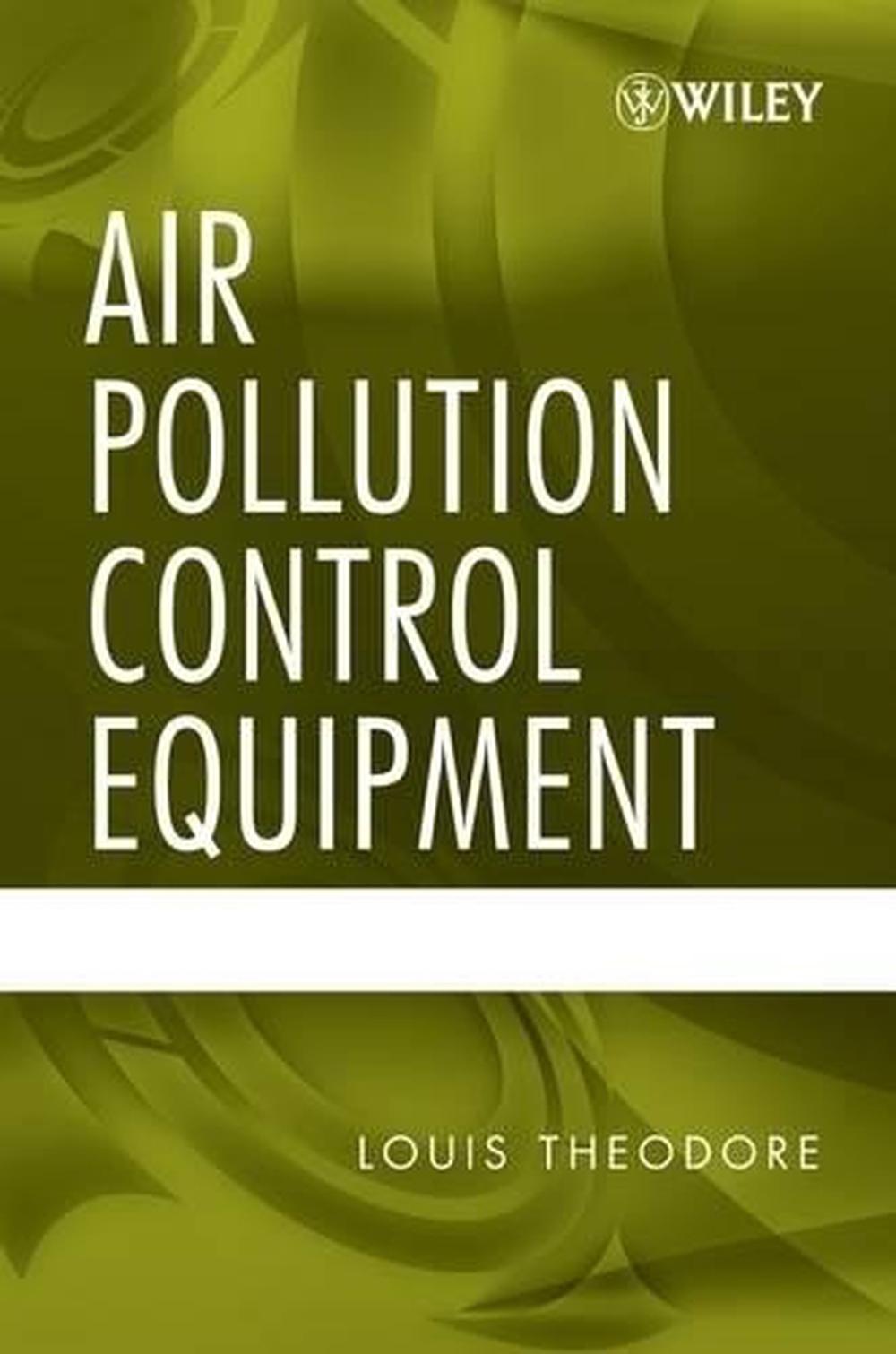
When you click on links to various merchants on this site and make a purchase, this can result in this site earning a commission. Affiliate programs and affiliations include, but are not limited to, the eBay Partner Network.
Air Pollution Control Equipment Calculations by Louis Theodore (English) Hardcov

- Item No : 236139202154
- Condition : Brand New
- Brand : No brand Info
- Seller : the_nile_uk_store
- Current Bid : US $148.65
-
* Item Description
-
The Nile on eBay

Air Pollution Control Equipment Calculations
by Louis Theodore
Air Pollution Control Equipment Calculations provides the reader with the fundamentals of air pollution equipment with the appropriate applications to provide an introduction to design principles. Each chapter contains problems dealing with performance equations, operation, maintenance and recent developments.
FORMAT
HardcoverLANGUAGE
EnglishCONDITION
Brand New
Publisher Description
Unique problem-and-solution approach for quickly mastering a broad range of calculations This book's problem-and-solution approach enables readers to quickly grasp the fundamentals of air pollution control equipment and essential applications. Moreover, the author sets forth solid principles for the design and selection of air pollution control equipment as well as for its efficient operation and maintenance. Readers gain a deep understanding of both the equipment itself and the many factors affecting performance. Following two introductory chapters, the book dedicates four chapters to examining control equipment for gaseous pollutants, including adsorption, absorption, and incineration equipment. The remaining six chapters deal with equipment for managing airborne particulate pollutants, including gravity settlers, cyclones, electrostatic precipitators, scrubbers, and baghouses. The appendix contains discussions of hybrid systems, the SI system (including conversion constants), and a cost-equipment model. Each chapter offers a short introduction to the control device discussed. Next, progressively more difficult problems with accompanying solutions enable readers to build their knowledge as they advance through the chapter. Problems reflect the most recent developments in pollution control and include a variety of performance equations and operation and maintenance calculations. Each problem includes a statement of the problem, the data used to solve the problem, and a detailed solution. Readers may further hone their skills by visiting the text's Web site for additional problems and solutions. This publication serves both as a textbook for engineering students and as a reference for engineers and technicians who need to ensure that air pollution control equipment operates efficiently and enables their facility to meet all air pollution control standards and regulations.
Back Cover
Unique problem-and-solution approach for quickly mastering a broad range of calculations This book's problem-and-solution approach enables readers to quickly grasp the fundamentals of air pollution control equipment and essential applications. Moreover, the author sets forth solid principles for the design and selection of air pollution control equipment as well as for its efficient operation and maintenance. Readers gain a deep understanding of both the equipment itself and the many factors affecting performance. Following two introductory chapters, the book dedicates four chapters to examining control equipment for gaseous pollutants, including adsorption, absorption, and incineration equipment. The remaining six chapters deal with equipment for managing airborne particulate pollutants, including gravity settlers, cyclones, electrostatic precipitators, scrubbers, and baghouses. The appendix contains discussions of hybrid systems, the SI system (including conversion constants), and a cost-equipment model. Each chapter offers a short introduction to the control device discussed. Next, progressively more difficult problems with accompanying solutions enable readers to build their knowledge as they advance through the chapter. Problems reflect the most recent developments in pollution control and include a variety of performance equations and operation and maintenance calculations. Each problem includes a statement of the problem, the data used to solve the problem, and a detailed solution. Readers may further hone their skills by visiting the text's Web site for additional problems and solutions. This publication serves both as a textbook for engineering students and as a reference for engineers and technicians who need to ensure that air pollution control equipment operates efficiently and enables their facility to meet all air pollution control standards and regulations.
Flap
Unique problem-and-solution approach for quickly mastering a broad range of calculations This book's problem-and-solution approach enables readers to quickly grasp the fundamentals of air pollution control equipment and essential applications. Moreover, the author sets forth solid principles for the design and selection of air pollution control equipment as well as for its efficient operation and maintenance. Readers gain a deep understanding of both the equipment itself and the many factors affecting performance. Following two introductory chapters, the book dedicates four chapters to examining control equipment for gaseous pollutants, including adsorption, absorption, and incineration equipment. The remaining six chapters deal with equipment for managing airborne particulate pollutants, including gravity settlers, cyclones, electrostatic precipitators, scrubbers, and baghouses. The appendix contains discussions of hybrid systems, the SI system (including conversion constants), and a cost-equipment model. Each chapter offers a short introduction to the control device discussed. Next, progressively more difficult problems with accompanying solutions enable readers to build their knowledge as they advance through the chapter. Problems reflect the most recent developments in pollution control and include a variety of performance equations and operation and maintenance calculations. Each problem includes a statement of the problem, the data used to solve the problem, and a detailed solution. Readers may further hone their skills by visiting the text's Web site for additional problems and solutions. This publication serves both as a textbook for engineering students and as a reference for engineers and technicians who need to ensure that air pollution control equipment operates efficiently and enables their facility to meet all air pollution control standards and regulations.
Table of Contents
PREFACE xi INTRODUCTION 1 1 AIR POLLUTION HISTORY 9 2 AIR POLLUTION REGULATORY FRAMEWORK 15 2.1 Introduction 15 2.2 The Regulatory System 16 2.3 Laws and Regulations: The Differences 17 2.4 The Clean Air Act 19 2.5 Provisions Relating to Enforcement 25 2.6 Closing Comments and Recent Developments 26 3 FUNDAMENTALS: GASES 27 3.1 Introduction 27 3.2 Measurement Fundamentals 27 3.3 Chemical and Physical Properties 29 3.4 Ideal Gas Law 37 3.5 Phase Equilibrium 41 3.6 Conservation Laws 42 Problems 44 4 INCINERATORS 69 4.1 Introduction 69 4.2 Design and Performance Equations 79 4.3 Operation and Maintenance, and Improving Performance 84 Problems 86 5 ABSORBERS 127 5.1 Introduction 127 5.2 Design and Performance Equations 131 5.3 Operation and Maintenance, and Improving Performance 142 Problems 143 6 ADSORBERS 185 6.1 Introduction 185 6.2 Design and Performance Equations 194 6.3 Operation and Maintenance, and Improving Performance 201 Problems 202 7 FUNDAMENTALS: PARTICULATES 247 7.1 Introduction 247 7.2 Particle Collection Mechanisms 249 7.3 Fluid–Particle Dynamics 252 7.4 Particle Sizing and Measurement Methods 260 7.5 Particle Size Distribution 262 7.6 Collection Efficiency 267 Problems 271 8 GRAVITY SETTLING CHAMBERS 315 8.1 Introduction 315 8.2 Design and Performance Equations 319 8.3 Operation and Maintenance, and Improving Performance 324 Problems 325 9 CYCLONES 361 9.1 Introduction 361 9.2 Design and Performance Equations 367 9.3 Operation and Maintenance, and Improving Performance 374 Problems 376 10 ELECTROSTATIC PRECIPITATORS 399 10.1 Introduction 399 10.2 Design and Performance Equations 406 10.3 Operation and Maintenance, and Improving Performance 410 Problems 415 11 VENTURI SCRUBBERS 451 11.1 Introduction 451 11.2 Design and Performance Equations 455 11.3 Operation and Maintenance, and Improving Performance 459 Problems 462 12 BAGHOUSES 503 12.1 Introduction 503 12.2 Design and Performance Equations 506 12.3 Operation and Maintenance, and Improving Performance 511 Problems 514 APPENDIX A HYBRID SYSTEMS 549 A.1 Introduction 549 A.2 Wet Electrostatic Precipitators 550 A.3 Ionizing Wet Scrubbers 550 A.4 Dry Scrubbers 551 A.5 Electrostatically Augmented Fabric Filtration 552 APPENDIX B SI UNITS 555 B.1 The Metric System 555 B.2 The SI System 557 B.3 SI Multiples and Prefixes 557 B.4 Conversion Constants (SI) 558 APPENDIX C EQUIPMENT COST MODEL 563 INDEX 567
Review
"A detailed publication with technical data abound, this book is both a textbook for engineering students and a reference for engineers and technicians," (Environmentalist, February 2009)
Long Description
Unique problem-and-solution approach for quickly mastering a broad range of calculations This books problem-and-solution approach enables readers to quickly grasp the fundamentals of air pollution control equipment and essential applications. Moreover, the author sets forth solid principles for the design and selection of air pollution control equipment as well as for its efficient operation and maintenance. Readers gain a deep understanding of both the equipment itself and the many factors affecting performance. Following two introductory chapters, the book dedicates four chapters to examining control equipment for gaseous pollutants, including adsorption, absorption, and incineration equipment. The remaining six chapters deal with equipment for managing airborne particulate pollutants, including gravity settlers, cyclones, electrostatic precipitators, scrubbers, and baghouses. The appendix contains discussions of hybrid systems, the SI system (including conversion constants), and a cost-equipment model. Each chapter offers a short introduction to the control device discussed. Next, progressively more difficult problems with accompanying solutions enable readers to build their knowledge as they advance through the chapter. Problems reflect the most recent developments in pollution control and include a variety of performance equations and operation and maintenance calculations. Each problem includes a statement of the problem, the data used to solve the problem, and a detailed solution. Readers may further hone their skills by visiting the texts Web site for additional problems and solutions. This publication serves both as a textbook for engineering students and as a reference for engineers and technicians who need to ensure that air pollution control equipment operates efficiently and enables their facility to meet all air pollution control standards and regulations.
Review Text
"A detailed publication with technical data abound, this book is both a textbook for engineering students and a reference for engineers and technicians," (Environmentalist, February 2009)
Review Quote
"A detailed publication with technical data abound, this book is both a textbook for engineering students and a reference for engineers and technicians," ( Environmentalist , February 2009)
Feature
Five hundred problems along with their solutions assist the engineers and students who either have to design, operate, select, or maintain air pollution control equipment. Problems designed to be used as self-teaching aid. Additional problems and solutions provided on the author website for professionals and engineers. Equations group together by type of pollution control equipment. Cover both gaseous and particulate control technology.
Details
ISBN0470209674Author Louis TheodoreShort Title AIR POLLUTION CONTROL EQUIPMENLanguage EnglishISBN-10 0470209674ISBN-13 9780470209677Media BookFormat HardcoverDEWEY 628.53Illustrations YesYear 2008Alternative 9780470255773Residence NY, USAffiliation Manhattan College Manhattan College, NY Manhattan College, NY ManhattaEdition 1stCountry of Publication United StatesDOI 10.1604/9780470209677UK Release Date 2008-08-22Place of Publication HobokenNZ Release Date 2008-07-01Pages 588Publisher John Wiley & Sons IncPublication Date 2008-08-22Imprint Wiley-InterscienceAudience Professional & VocationalUS Release Date 2008-08-22AU Release Date 2008-07-14


















